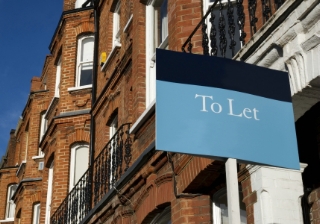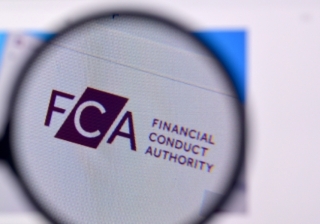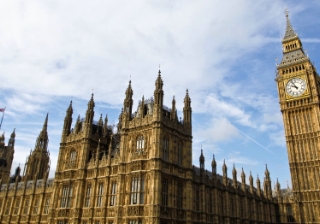Bridging loan industry breaks £1bn barrier
The value of the bridging loan industry has broken the £1 billion barrier for the first time, according to detailed projections from West One Loans.

Deprecated: trim(): Passing null to parameter #1 ($string) of type string is deprecated in C:\inetpub\wwwroot\2025.financialreporter.co.uk\htdocs\templates\front-end\partials\article_blockquote.php on line 2
The increase is being driven by a surge in lending to residential property investors. With funding costs soaring on the high-street, banks and building societies are scaling back their lending to property investors and upping rates. With the high-street unable to cater for demand, more investors have turned to bridging loans to fund their projects. Bridging lenders are plugging the funding gap left by high-street lenders.
Gross lending in the first quarter of 2012 was £382m, 95% higher than in the first quarter of 2011, and 30% higher than the previous quarter. If the pace of growth continues along its current trajectory, gross lending in 2012 will hit £1.5 billion, an increase of 68% from 2011.
The number of loans advanced in Q1 2012 was 74% higher than during the same period last year, reflecting the increasing appetite for bridging loans over the past twelve months. The number of loans fell marginally by 8% between Q4 2011 and Q1 2012, in line with the traditional winter slow down.
The average loan size rose sharply from £342,000 in the first quarter of 2011 to £412,000 in Q1 2012, an increase of over 20%. This reflects the bigger projects being tackled by property investors.
Duncan Kreeger, chairman of West One Loans, explained:
“A big funding gap has been created by the problems high street lenders are having with increasing funding costs, increasing capital requirements, and heavy exposure to toxic assets. As a result the high street simply can’t cater for the high demand from property investors for residential loans. It has created a huge gap between supply and demand that could become even wider if the economy fails to recover with any conviction.
"Net mortgage lending will only be around £5 billion this year: The main market is still crippled, and if the eurozone crisis worsens mortgage lending could enter a state of near-paralysis.”
“Thankfully for property investors, bridging lenders are stepping in to fill the funding gap. Investors have become steadily more disillusioned with the restricted choice of finance on offer from banks and building societies.
"More of them are turning their backs on the high street and choosing bridging finance as a short-term and practical way of financing their projects. This has pushed the growth of the bridging industry along at an accelerated pace.”
“But it’s not just investors who can’t get finance on the high street that use bridging loans. We’ve seen plenty of evidence of investors using bridging loans even when they can access a buy-to-let mortgage on the high street. This may be just the start of a more pronounced shift in the way property investors choose to fund their projects.
"The figures back up that view: with gross lending set to reach over £1.5 billion by the end of this year, the bridging is growing at a rapid pace. Property investors see bridging loans as an increasingly legitimate option.”
Analysis by West One reveals the growth of the bridging industry is being driven by an increase in residential lending. With the high street unable to cater for the increasing demand for financing of residential property projects, more investors have turned to bridging lenders. In Q1 2012, 86% of all loans were for residential properties, up from 84% in Q4 2011, and up from just 70% back in Q1 2009.
Duncan Kreeger commented:
“More lenders are concentrating on residential deals to take advantage of the demand that the high street can’t cater for. Plenty of new lenders have piled into the sector to try and get in on the action. Competition is fierce as a result, and that is driving down rates and enticing more property investors to use bridging finance.
"But the shift is also to do with residential investments being much lower risk than commercial ones. It is much easier to refinance residential investments because demand for rented accommodation is sky high, so investors can be confident of avoiding extended void periods. That’s in stark contrast to commercial investments, where prolonged void periods are a constant concern - particularly when the economy is sluggish.
"There are some lenders, like West One, who can do great residential deals but also have the flexibility to cover a range of commercial deals.”
Falling interest rates have also contributed to the rapid growth of the bridging industry. Rates have fallen since the start of 2009 in line with market trends, and this has encouraged more investors to use bridging finance to fund their projects. The trend of declining rates continued in Q1 2012, with the average rate falling from 1.41% in Q4 2011 to 1.38%. The average rate also fell year-on-year – it was 1.52% in Q1 2011.
Mark Abrahams, CEO of West One Loans, said:
“Falling rates have increased the allure of bridging loans to property investors. They are increasing the value of property investments for the borrowers and driving up the average amount they want to borrow. This is in glaring contrast to the high street, where increased funding costs are forcing lenders to up their rates. Turmoil in the wholesale markets has pushed funding costs up by 40% for the biggest UK lenders since the beginning of February.
"That’s why we have seen big banks and mutuals like RBS and Halifax hike up their rates. More will follow their lead. This is encouraging more property investors to abandon the high street and use bridgin
Breaking news
Direct to your inbox:
More
stories
you'll love:
This week's biggest stories:
Buy-to-let
Buy-to-let market 'in transition' as landlords turn to refinancing

MPowered Mortgages
MPowered closes to new business amid potential sale

FCA
FCA bans and fines adviser £100,000

Budget
Reeves lays groundwork for tax rises in surprise pre-Budget speech

Bank Of England
Interest rates held at 4% in narrow 5-4 vote

Budget
What taxes could be raised in the Autumn Budget?
